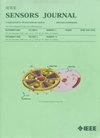GPR-CUNet: Spatio-Temporal Feature Fusion-Based GPR Forward and Inversion Cycle Network for Root Scene Survey
IF 4.3
2区 综合性期刊
Q1 ENGINEERING, ELECTRICAL & ELECTRONIC
引用次数: 0
Abstract
Ground penetrating radar (GPR) forward and inversion methods are key techniques for studying radar imaging mechanisms and investigating subsurface scenes. Efficiently interpreting radar wave data will facilitate the development of subsurface structure detection applications, especially in the intricate plant root distribution. Existing forward and inversion models are constrained by the highly computational and time-consuming forward process, making it difficult to be applied to complex real-world subsurface scenarios. Inspired by the spatio-temporal properties during radar wave imaging, a spatial and temporal fusion cycle U-shaped model named GPR-CUNet was proposed. The model is more adapted to the transformation between permittivity distribution and GPR B-Scan data in complex environment. First, to extract the spatial and temporal features from the permittivity distribution and radar data, a spatio-temporal feature fusion module (STFM) based on CNN and BiLSTM was designed. Then, for the translation between the permittivity distribution and the radar wave data, two identical U-shaped networks with the STFM were constructed. Finally, guided by predictive consistency and cyclic consistency, a hybrid loss function based on multiscale structural similarity (MS-SSIM) and L1 norm was configured to boost the performance of both the forward and inversion networks. The numerical simulation experiments revealed that the proposed model imparted exceptional performance and efficiency in the prediction of radar wave features and reconstruction of permittivity distribution under complex scenarios. In preburial experiments and field root testing, our inversion model can effectively recover the subsurface root and soil horizons distribution. Accurate permittivity distribution of subsurface scene can provide a theoretical basis for imaging and 3-D reconstruction of the physical media distribution in plant root zones.求助全文
约1分钟内获得全文
求助全文
来源期刊

IEEE Sensors Journal
工程技术-工程:电子与电气
CiteScore
7.70
自引率
14.00%
发文量
2058
审稿时长
5.2 months
期刊介绍:
The fields of interest of the IEEE Sensors Journal are the theory, design , fabrication, manufacturing and applications of devices for sensing and transducing physical, chemical and biological phenomena, with emphasis on the electronics and physics aspect of sensors and integrated sensors-actuators. IEEE Sensors Journal deals with the following:
-Sensor Phenomenology, Modelling, and Evaluation
-Sensor Materials, Processing, and Fabrication
-Chemical and Gas Sensors
-Microfluidics and Biosensors
-Optical Sensors
-Physical Sensors: Temperature, Mechanical, Magnetic, and others
-Acoustic and Ultrasonic Sensors
-Sensor Packaging
-Sensor Networks
-Sensor Applications
-Sensor Systems: Signals, Processing, and Interfaces
-Actuators and Sensor Power Systems
-Sensor Signal Processing for high precision and stability (amplification, filtering, linearization, modulation/demodulation) and under harsh conditions (EMC, radiation, humidity, temperature); energy consumption/harvesting
-Sensor Data Processing (soft computing with sensor data, e.g., pattern recognition, machine learning, evolutionary computation; sensor data fusion, processing of wave e.g., electromagnetic and acoustic; and non-wave, e.g., chemical, gravity, particle, thermal, radiative and non-radiative sensor data, detection, estimation and classification based on sensor data)
-Sensors in Industrial Practice
 求助内容:
求助内容: 应助结果提醒方式:
应助结果提醒方式:


